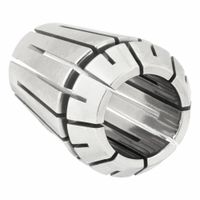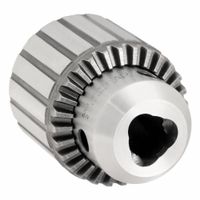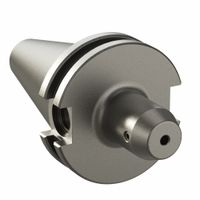Toolholders are critical components in CNC machining, serving as the interface between the machine spindle and the cutting tool. They ensure precise tool positioning, rigidity, and efficient power transmission. Various types of toolholders are designed to accommodate different cutting operations and machine requirements: * **ER Collet Chucks:** These are highly versatile and widely used for holding various tools, including end mills, drills, and reamers. They use a collet that collapses around the tool shank when tightened, providing strong clamping force and good concentricity.
* **Side Lock Holders:** Also known as set screw holders, these are commonly used for tools with cylindrical shanks, such as end mills. A set screw on the side of the holder clamps onto a flat on the tool shank, preventing rotation and pull-out. They offer good rigidity but might not provide as much concentricity as collet chucks.
* **Hydraulic Holders:** These toolholders use hydraulic pressure to clamp the tool shank. A sealed chamber filled with hydraulic fluid expands when a screw is tightened, providing uniform clamping force around the tool. They offer excellent runout accuracy, vibration dampening, and ease of use, making them ideal for high-precision and high-speed machining.
* **Shrink Fit Holders:** These holders rely on the principle of thermal expansion and contraction. The holder is heated, causing its bore to expand. The tool is then inserted, and as the holder cools, it shrinks around the tool shank, creating an extremely rigid and balanced connection. Shrink fit holders provide superior runout accuracy and clamping force, making them suitable for high-performance machining and demanding applications.
* **Milling Chucks:** Designed for heavy-duty milling applications, these holders provide exceptional gripping force and rigidity. They typically use a series of bearings and rollers to create a strong, uniform clamp around the tool shank, minimizing vibration and improving surface finish.
* **Tapered Shank Holders (e.g., CAT, BT, HSK):** These refer to the connection interface between the toolholder and the machine spindle. CAT and BT tapers are common in North America and Asia, respectively, offering good rigidity. HSK (Hollow Shank Taper) is a newer standard that provides a stiffer and more accurate connection due to simultaneous taper and face contact, making it popular for high-speed and high-precision machining.The choice of toolholder depends on factors such as the machining operation, desired precision, cutting forces, spindle interface, and budget.













